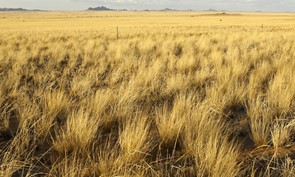Often overlooked, grasslands are a key component of the conservation puzzle.
Atlanta’s urban tree canopy is almost 48% making it among the highest in the nation. Most people understand the benefits of trees and forests: soil and water conservation, carbon sequestration, cleaner air, shade and wildlife habitat, reduction of urban heat islands, and beauty. With all these benefits, planting more trees seems to be an easy answer.

But while planting more trees can be beneficial, it’s not the only path to conservation and not the only habitat worth saving. There are many types of forests, each playing different and crucial roles in the ecosystem, but there are also a variety of other biomes important for ecology and conservation. One of these biomes is a critical component of conservation in the Southeast that is often overlooked: grasslands.
What are grasslands?
North America has temperate grasslands, also called prairies. Historically, grasslands covered more than half of the Piedmont geographic region in Georgia. Grassland habitat was and still is, important for many Indigenous groups who appropriately maintained the habitat using fire. Now, due to many factors, the Southeastern region of the United States has lost about 90% of its grasslands.

What are the benefits of grasslands?
Grasslands aren’t just fields of tall grass. Meadows, bogs, balds, marshes, and glades are all types of grasslands. They are complex ecosystems with deep roots. Grasslands offer an abundance of biodiversity and benefits to us:
- Pollinator habitat
- Reduction of erosion and runoff
- Carbon sequestration
- Preservation of plant and animal species, especially during droughts
Why the Southeast?
Grasslands all over the United States, and globally, have disappeared swiftly and quietly. Due to this, grassland bird populations in the U.S. have declined more than 40% since the mid-1960s.
Despite the South containing important grassland habitat and potential habitat loss due to population growth in the region, data on Southeastern grasslands specifically is limited because most grassland research occurs in the West and Midwest regions,
The Southeastern United States is a hidden gem of global biodiversity: it boasts the highest salamander diversity in the world and more than 25% of its freshwater species (ex. fish, mussels, etc.) are not found anywhere else on Earth. The research available on Southern grasslands fit that pattern of uniqueness: 60% of native plants and because 66% of rare plants in the Southeast need or prefer grasslands.
So, while grassland conservation may not be as visibly beautiful as planting more forests, the benefits of conserving and reestablishing grasslands are clear: renewed habitats, reduced erosion and runoff, carbon sequestration, and increased biodiversity.
Learn more about conserving Southeastern grasslands:
- Learn more: Southeastern Grasslands Initiative.
- Share information about grasslands and their importance with your friends and family.
- Plant native plants in your yard to help improve biodiversity.
